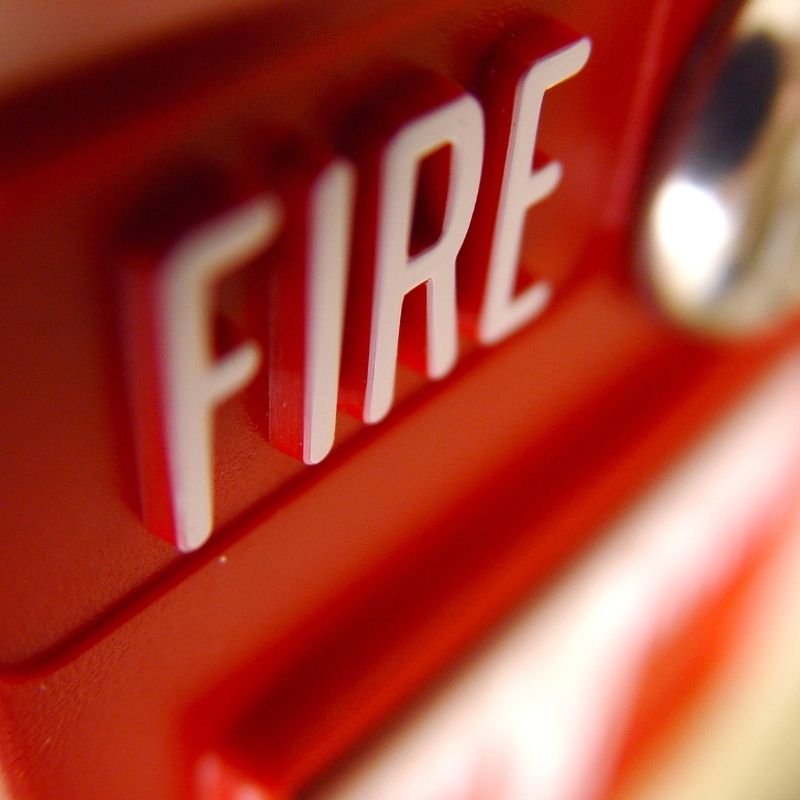
This article was published on 3/2/2018 and updated on 5/3/2022
A Mass Notification System (MNS) is also known as an Emergency Communication System (ECS) and is much more than a fire alarm. An MNS is used to deliver audio messages to alert all occupants of fire and non-fire emergencies and should direct occupants with proper instructions such as evacuation procedures, or shelter in place commands depending on the emergency.
A risk analysis for a Mass Notification System should be conducted by an experienced mass notification system designer as required under National Fire Protection Association, NFPA, fire alarm and life safety standards.
Origination and Purpose of Mass Notification Systems
The MNS was originally popular and widely used in military occupancies to broadcast messages quickly inside and outside of buildings on a base, with the technology becoming a launching pad to MNS in non-military applications. Mass Notification Systems aim to prevent mass casualties in commercial, public and government facilities including offices, hospitals and school campuses. The goal of any MNS is to provide real-time instructions to groups of individuals during emergencies such as:
- Severe weather and natural disasters
- Fire or hazardous material release
- Active shooter situations
- Terrorist attacks
- Child abduction
- Hostage situation
- Traffic accidents and alerts
- General information
The design of an MNS may consist of three distinct phases including:
- Identification of the need for an MNS and evaluation of the applicable rules
- Design phase with an entire team working together for a successful, integrated system
- Testing of the MNS and proper acoustics in all areas
Components of an MNS
The main components of a mass notification system are determined during the risk analysis and design phase. The components of an MNS include:
- Notification network
- Control unit
- Part of an integrated fire and life safety system
- Multi Zone audio systems for localized announcements
- Text to speech translation capability
- Video monitoring
- Weatherproof construction of outdoor elements
- Remote access to deliver notifications while off-site
Code Requirements for Mass Notification Systems
According to the most recent edition of NFPA 101, Life Safety Code, a fire and life safety system designer must perform a risk analysis prior to designing a Mass Notification System. This requirement has also been present in NFPA 72, National Fire Alarm and Signaling Code.
The United Facilities Criteria (UFC) 4-021-01 Design and O&M: Mass Notification Systems is a publication by the U.S. Department of Defense (DoD) and outlines the criteria for Mass Notification Systems in DoD facilities. The MNS must have the means to timely notify occupants of immediate threats with explicit instructions on how to respond including from prerecorded messages and the ability to give live, audible emergency messages for notification and evacuation procedures.
NFPA 72, 2022, Edition, Chapter 24, details the code requirements for Emergency Communication Systems including the application, installation, and performance as well as inspection, testing, and maintenance requirements. Chapter 24 goes into detail regarding intelligible voice messages, loudspeakers, microphone use, and ancillary functions. The system should be defined as one-way or two-way communication, with the ability to prerecord automatic emergency messages that should be identified and developed for each scenario identified in the emergency response plan.
NFPA 101, includes Figure 7.8.2(k), an Emergency Communications Systems Supplementary Record of Inspection and Testing as a guideline. A risk analysis is required based on the listed occupancies such as for a high-rise building, and educational building or campus, mall occupancies and more.
In addition to NFPA 72 and NFPA 101, a risk analysis may be required by other code regulations such as the International Building Code, IBC, or the Chicago Building Code, CBC. Both NFPA standards are clear in that an MNS is not expressly required for campuses or facilities, but rather provide information so that the owner can make an informed decision. When an MNS is provided, as is typical with any code it must meet the requirements of NFPA 72.
Facilities may also be required to meet regulations according to the Americans With Disabilities Act (ADA), Occupational Safety and Health Administration (OSHA), and FEMA’s Outdoor Public Alerting System.
NFPA 3000, the Standard for an Active Shooter/Hostile Event Response (ASHER) Program, addresses an integrated preparedness, response, and recovery in response to the increasing number of tragedies involving active shooter and hostile events. NFPA 3000 addresses all aspects of the process such as identifying hazards, assessing vulnerability, resource and incident management at a command level, vulnerabilities, competencies of emergency responders and recovery.
HRSS/SMG Provides Integrated Mass Notification and Fire Alarm Systems
High Rise Security Systems, HRSS, with SMG Security Holdings, SMG offers Mass Notification Systems with integrated fire, life safety and security alarms. We offer decades of experience in protecting commercial, industrial, and public properties in Illinois in and around Chicago. With vast experience in all types of building structures from low-rise to high-rise and mass complexes, we offer a complete fire and life safety alarm system designed to meet your unique building and structural needs with complete code compliance to all applicable regulations.
HRSS/SMG is a leading fire and life safety system provider dedicated to protecting properties and saving lives with high quality, code compliant integrated security systems. We offer UL listed equipment from the top fire and life safety system manufacturers, a complete system design team, certified and trained technicians. Contact us to make sure your mass notification system is designed to protect all occupants with compliance to all applicable code regulations.



